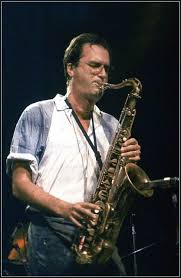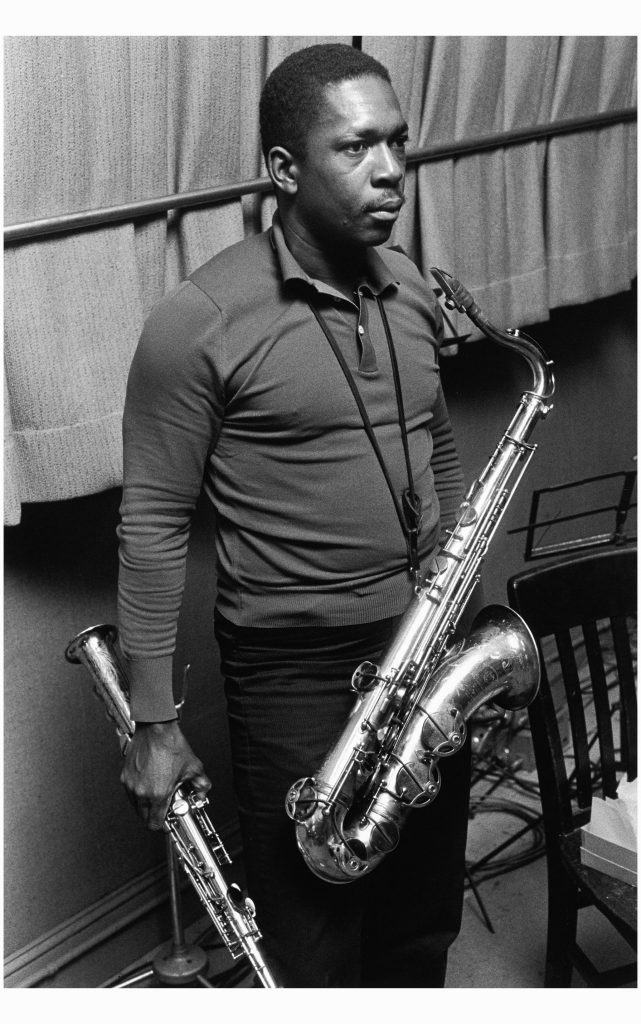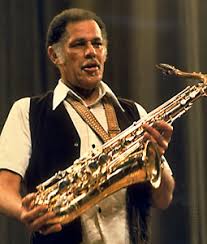This video of John Coltrane playing, “On Green Dolphin Street,” is less of a music video and more of a music documentary. What it lacks in production value is made up for in historical value. There are no expensive props or dazzling visual animations— just four musicians playing a simple 32-bar form, show tune. Because the context of their performance is so spontaneous and evidently casual (because the leader missed the session), each musicians talent is showcased brilliantly and without distraction.
The quartet’s first musical decision is to start the tune off with a rubato piano intro featuring one complete statement of the melody. Paul Chambers accompanies him with the bow which sets up a nice contrast for the pizzicato petal-point figure he plays when Jimmy Cobb brings the time in. The staging and camera work reflects the musical decisions made by the quartet perfectly. The video opens with an overhead shot of Wynton Kelly’s hands on the piano. They pull the camera back to reveal Paul Chambers, then Jimmy Cobb, and finally John Coltrane, but just his silhouette. Once Coltrane brings in the melody, the lighting shifts and the horn player has the spotlight.
During the saxophone solo, we have some subtle camera movement to add liveliness and motion to the shot. A wavelike animation also appears right by the bell of Coltrane’s saxophone. The first time I watched this video, I was mystified by the animation that fades in around 2:18 until I read mobuisII’s comment which points out that the animation was generated using an oscilloscope. The waves are entertaining and they offer some variation to an otherwise static shot, but they don’t do much for me. I find myself not paying too much attention to them while they are visible and I certainly don’t miss the when they fade out.
While the decision to include the oscilloscope animation was questionable on the videographer’s part, all the decisions they made with the lighting were excellent. Jakob Kurup says in the comment section that the, “musicians almost look divine.” The image of these legendary musicians playing against a solid black background is quite powerful. The spotlight illuminates each one of them when they take a solo casting dramatic shadows over their concentrated expressions. Sometimes it even appears as though the musicians are glowing when the camera goes slightly in and out of focus temporarily blurring the picture.
The first two cuts in the video happen at the end of the saxophone solo into the piano solo. We see Coltrane’s profile for the entirety of his solo and towards the end a three quarter shot gets overlayed with the profile shot. The profile shot quickly fades out and the viewer gets to watch Coltrane finish his solo from the three quarter angle. The next transition is a slower one which shows the back of Wynton Kelly sitting at the piano. All of the video editing described previously happens in about 15 seconds and is done very smoothly. The video is certainly deserving of Chris Lawrence’s praise, “So incredibly polished and professional. Like something out of a movie. Breathtaking stuff.”
The “no-frills” vibe of this video combined with the greatest playing the history of jazz has to offer makes this production something that belongs in an archive. Watching this video as a musician is a truly educational, and equally inspiring, experience because we get to understand how Coltrane and his contemporaries carried themselves on stage through visual means. We’re not left guessing how Wynton Kelly’s hands looked on the piano, or how Paul Chambers held his bow all thanks to the skilled recording engineers at work that day.




